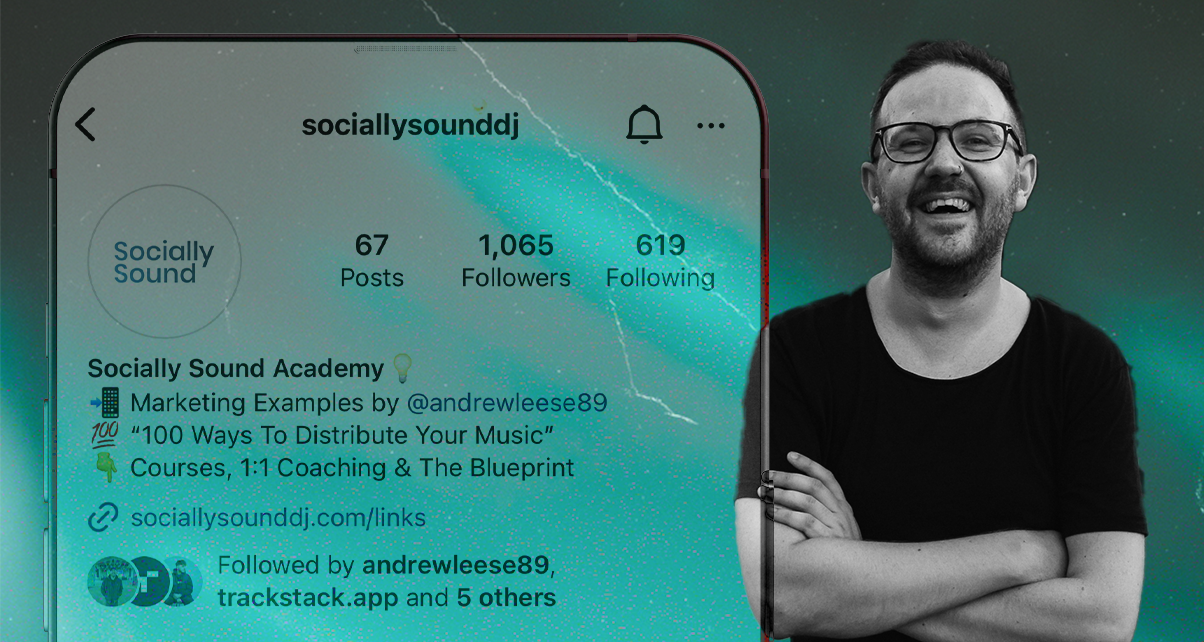
The Man Behind Socially Sound
We caught up with Socially Sound Founder and Andrew Leese to learn about Socially Sound, talk business and peak into how his brain works.
Mr. Socially Sound, please introduce yourself.
I am a marketer who’s worked in the electronic music industry for the last ten years, and I have a business called Socially Sound which I founded during the Covid lockdown. I used to work for Fuse London and Maceo Plex.
How and when did your interest in dance music start?
My first introduction to dance music was my sister Joey, who would play it as she was getting ready to go out. This introduced me mostly to electronic music that I didn’t like, so I started to dig for my own style and sounds. My sisters friends, who I consider older brothers gifted me some trance CD’s when I started driving (these same CD’s inspired me to drive down the road at 80MPH) which really got me into dance music.
What sound/ genre/ artists do you gravitate to?
From DJ Seinfeld, Pretty Girl and Salute all the way across to heavy techno in Richie Hawtin and Dax J.
Tell us about Socially Sound, when and why did you decide to start it?
It started during the pandemic when an artist rang me up and said what do I do with my audience now? That gave me the idea to become a consultant, a lot of artists and artist managers needed help. The name socially sound came from a conversation with my girlfriend at the time who said I need to write some of the things down that I wanted to be at the end of the pandemic. I wrote financially sound, mentally sound, and socially sound. I started Socially Sound because I didn’t think artists understood social media.
How does Socially Sound work with artists and brands?
Socially Sound works with artists and brands in three ways:
- They can join the Socially Sound Academy and do my courses.
- They can become clients on a monthly retainer.
- They can join my webinars and coaching sessions to understand some of the more complicated things about music strategy.
Any tips for artists regarding content and storytelling?
Everything comes from the experiences you’ve gone through yourself. Storytelling is ‘my parents got divorced when I was young, and it hurt, but I turned it into an album’ or it’s content from your vinyl collection which contains records that have been passed down to you from generations prior. Telling stories about why you like a certain track is another great example of storytelling.
What’s exciting about working with SpinVid?
If I were 19 years old and looking for solution to the issue that I don’t have any design skills and I don’t know many people, this app would be perfect for me. Also as I’m not very good at creating video content myself, I look at SpinVid as a really easy way to learn how a piece of video content goes together with a track, an artwork, and a moving element.
Tell us about your newsletter, The Blueprint?
The Blueprint came from a platform called Marketing Examples and there was a Lil Nas X article which broke down how he became famous from a Reddit meme. I looked at that and thought I’d never seen anyone do it before, and my background as a former journalist made me think “oh, I could do that” harnessing all of the past campaigns I’ve worked on. I needed something to do in the pandemic, so when Biceps album came out I naturally chose to write about that inspired by the Marketing Example Lil Nas X article. My newsletter breaks down the strategy of the leading names in the music industry one case study at a time.
What is your long-term vision for Socially Sound, what should we look out for from you?
My long term vision is that I will one day have a building, similar to that of a music studio, but where people come to create content. They can come to the space to use me as someone to direct the content for them, or to use my brain for the idea and then my facility to execute that idea. I also want to make the music industry understand that every artist has broken through in the last 10 years is because of social media, as well as their music. It’s the key to everything.
Who are your ‘ones to watch’ currently in the music scene?
Us Two, Volaris, Emily Makis, and Charlie T are all very talented people in the game right now, people should definitely keep their eyes on them.

